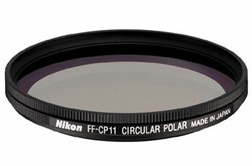It’s time to spice up your landscape photography with filters.
Filters are used in photography to bring back an image to the way our eyes have perceived the original scene. Some times it’s not possible for our cameras to record an exact scene – so we have to rely on the manufacturers of camera products.
Filters also help us to create mood in our images and bring out the best in a scene. A small selection of filters is well worth packing when heading off for a trip. They don’t take up too much space and will definitely add a bit of spice to your images.
Filters work by being placed in front of your camera lens. You can also place several filters in front of your camera at any given time.
 Lets take a look at the most important ones to use.
Lets take a look at the most important ones to use.
Neutral Density Filters (ND): Neutral Density filters will certainly help you with tough exposures. These filters work by cutting down the light that reaches your lens. These filters come in a variety of strengths with the most popular being 0.3, 0.6 and 0.9 – these filters will help with exposure without affecting colour.
One half of these filters is dark and the other is completely clear. They basically work by reducing brightness. The different numbers stand for the amount of brightness they reduce – 0.3 ND reduces light by one stop – 0.6 reduces light by 2 stops – 0.9 reduces light by three stops.
Lets say you arrive at a high contrast scene, – you take a light reading of the sky and get an exposure reading of F/22 at 1/8 second; you take a reading from the ground in front of you and get a reading of F/22 at 1 second. This is a difference of three stops of light. You need to reduce the brightness of the sky. By using the 0.9 ND you will reduce the light in the sky by three stops without affecting the light hitting the ground in front of you.

Warm-up filters: In overcast conditions, don’t put your camera away. This is an ideal time for you to switch your attention to landscape detail. On an overcast day images often appear cold and dull. Try using a warm-up filter. These filters will remove the dull effect that you get shooting without the sun.
The 81-series are the best choice and will give your images an extra bit of life. An 81A warm-up filter is ideal to use in adding extra warmth to low light images.

The red filter is one of the most popular. This filter will darken the sky giving your image more impact. The most common red filter is the number 25. Filters for B/W work by transmitting light of its own colour, and holds back light of the other colours.
There’s a large amount of filters available; these are the most important filters for landscape photography. There are also several filters on the market today that will do very little for your photography. Colour graduated filters should be left at home or placed in the bin – colour graduated filters work by creating un-natural colours, destroying your final print.
About the Author
TJ Tierney. Award winning Irish Landscape photographer. If you are looking for more photo tips visit http://www.goldenirishlight.com/photographytips.html To view some of his images visit his on line gallery @ http://www.goldenirishlight.com
Like This Article?
Don't Miss The Next One!
Join over 100,000 photographers of all experience levels who receive our free photography tips and articles to stay current:







I am fairly certain you have no idea what you’re talking about. Have you even used a neutral density filter before?
I think you are talking about a split ND filter. A ND filter stops down the light on the whole image. A split ND filter (graduated neutral density filters) stops down half of the image. Both are useful.